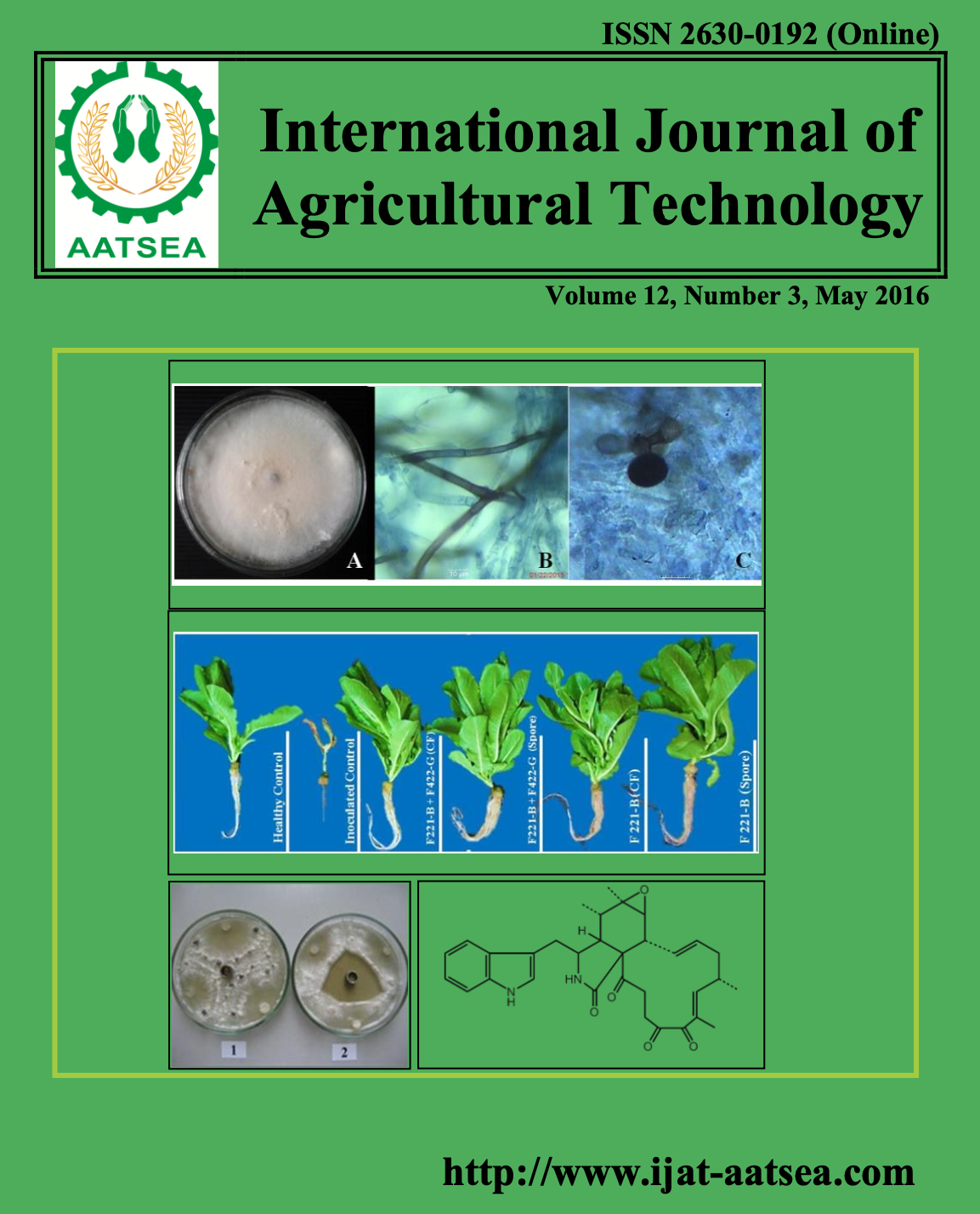Biological activity of preparation Gliocladin-SC in vitro to control soil pathogens
Main Article Content
Abstract
Particularly dangerous pathogens of crops are fungus of the genus Sclerotinia and Fusarium. They are known as causal agents of fungal diseases that affect a wide range of cultivated plants: cereals, legumes, beans, vegetables, soy, sunflower, corn, etc. Pathogens cause various pathological phenomena - rot diseases of the roots, stems, seeds, fruits, and general depression and premature aging. Biological control methods that reduce the population of pathogen in the soil appear to be the most practical method. Fungus Trichoderma virens Miller, Giddens and Foster is a haploid, filamentous hyphomycete (a subclass of fungi). This fungus is present in most soils throughout the world. The antagonistic activity of T.virensshowed that it is parasitic on many soil-borne and foliage pathogens. Recent discoveries show that the fungi not only act as biocontrol agents, but also stimulate plant resistance, and plant growth and development resulting in an increase in crop production. The biocontrol activity involving mycoparasitism, antibiotics and competition for nutrients, also induces defense responses or systemic resistance responses in plants. This paper reviews confirmed the antagonistic potential and antifungal ability of biopesticide Gliocladin-SC (active microorganism Trichoderma virens strain 3X) against pathogens - agents of white rot and root rot Fusarium complex of crops. Gliocladin-SC is recommended as biological product on soy for control the basal and root rot by preplans seed-treatment.
Article Details

This work is licensed under a Creative Commons Attribution-NonCommercial-NoDerivatives 4.0 International License.
References
Билай, В. И. (1982). Фузарии. Киев. 497 pp.
Бёттхер, И., Ветцель, Т., Древе, Ф. В., Кеглер, X., Науманн, К., Фрайер, Б., Фрауэнштайн, К., Фукс, Э. (1987). Методы определения болезней и вредителей сельскохозяйственных растений. 224 pp.
Гагкаева, Т. Ю., Гаврилова, О. П., Левитин, М. М. жана Новожилов, К. В. (2011). Фузариоз зерновых культур. Защита и карантин растений 5:69-119.
Егоров, Н. С. (2004). Основы учения об антибиотиках. М. 528. Bardin, S. D., Huang H. C. (2001). Research on biology and control of Sclerotinia diseases in Canada. Canadian Journal of Plant Pathology 1:88-98.
Boland, G. J. and Hall, R. (1994). Index of plant hosts of Sclerotinia sclerotiorum. Canadian Journal of Plant Pathology 16:93-108.
Comporota, A. (1985). Antagonisme in vitro de Trichoderma spp. vis-a vis de Rhizoctonia solani Kuhn. Agronomie 5:613-620.
Inglis, G. D. and Boland, G. J. (1990). The microflora of bean and rapeseed petals and the influence of the microflora of bean petals on white mold of bean. Canadian Journal of Plant Pathology 12:129-134.
Harman, G. E. (2011). Multifunctional fungal plant symbionts: new tools to enhance plant growth and productivity. New Phytologist 189:647-649.
Howell, C. R. (2003). Mechanisms employed by Trichoderma species in the biological control of plant diseases: The history and evolution of current concepts. Journal of Plant Diseases and Protection 87:4-10.
Hudzicki, J. (2009). Kirby-Bauer disk diffusion susceptibility test protocol. ASM Microbe Library, American Society for Microbiology.
Kononenko, G. and Burkin, A. (2006). T-2 toxin production as a possible taxonomy marker for Fusarium sporotrichioides and Fusarium poae species. Book of abstracts: Europ. Fusarium seminar. Wageningen, Netherlands 51.
Şesan, T. E. and Crişan, A. (1998). Putregaiul alb al plantelor de cultură Sclerotinia sclerotiorum prevenire şi combatere. Ceres, Bucureşti. 288 pp.
Statistical Yearbook of the Republic of Moldova (2013). Moldova. Chisinau. pp. 338-348.


